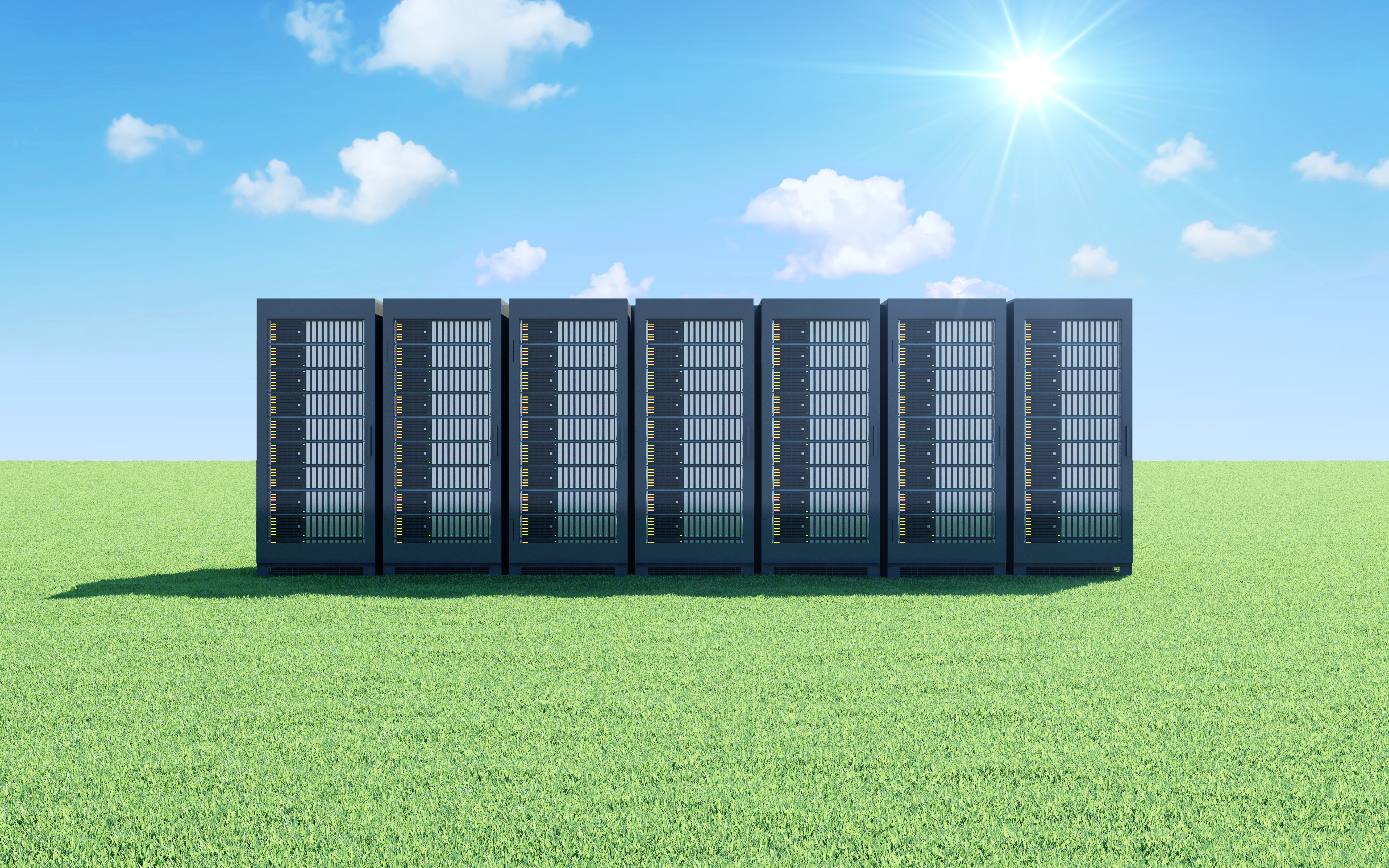
Without data centers, there would be no video conferences, online sales, mobile applications, streaming or online banking. Essential in the digital age, data centers are the mainstay of our everyday digital lives, managing and storing a phenomenal amount of data. While they are not the most energy-intensive players in the digital ecosystem, their operation requires high levels of energy consumption, which takes its toll on the environment. Fortunately, solutions are available to reduce this footprint.
Back to basics
Cloud computing has revolutionised the way businesses and individuals use the Internet by transferring data, information and uses to the web. However, to access them, they need to be stored somewhere. This is precisely the role of data centers, i.e. infrastructures dedicated to the storage, processing and distribution of vast amounts of digital data which may include our favourite films, annual budgets, family photos, email exchanges and professional content.
All this data is stored, secured and backed up in these centers, which are equipped with computer servers, cooling systems, security devices and power supply systems.
Data center pollution factors
As with any industrial structure, data centers use energy and generate heat. Electricity consumption is divided between that directly linked to the operation of IT equipment (servers, storage equipment and network equipment) and that associated with the operation of technical environment equipment (air conditioning and air handling, electricity distribution and security).
A study by the Négawatt association found that the digital sector uses 8.5% of the country’s electricity, including 2% for data centers (i.e. 10 TWh/year). Data centers are both the heart and the nervous system of the digital economy, having become indispensable as the economy goes digital and adopts new uses. As a result, their activity requires a large and constant power supply, 2/3 of which, again according to the association, is used to run the machines and 1/3 to remove the heat generated by said machines.
To find out more, the ADEME and ARCEP study, “Assessment of the environmental impact of digital technology in France and prospective analysis”, shows that, if trends in terms of technology choices and consumption patterns were to remain equivalent to our current lifestyle, the proportion of data centers should increase from around 23% of the power consumption in the digital sector to more than 42% over the 2020-2050 period.
The construction of the buildings housing servers is another environmental impact factor to be taken into consideration. As with all buildings, their construction requires materials, water and energy that generates greenhouse gases. Depending on their location, they can also have an impact on the local environment, land and biodiversity.
Solutions to limit the environmental impact of data centers
Faced with these challenges, a number of solutions are being developed to reduce the environmental impact of data centers. These solutions aim at improving the energy efficiency of data centers, reducing their water consumption, minimising waste generated by their operation and promoting the use of renewable energy sources.
· Assessing the impact
You can only control what you can assess. This is why it is important to gather the right data to make the right decisions. The lifecycle of data centers requires a wide range of data to be included in the calculation, including the impact of the materials used in the construction of technical and building infrastructures, and the consumption of fossil fuels.
Life cycle analysis goes beyond the mere analysis of greenhouse gas emissions. It takes into account 16 environmental impact assessments, such as water consumption, eutrophication of water or soil, ozone depletion, the use of fossil resources (oil, gas) or minerals, etc.
· Using free cooling in data centers
The operation of a data center generates heat. For a long time, the preferred solution was to install air conditioning in these big rooms. However, this solution is not such a good idea as it is expensive and significantly affects the energy consumption of buildings.
While air conditioning has not entirely disappeared from data centers, its use has been largely streamlined, and other methods have emerged such as free cooling. This cooling method uses outdoor air rather than mechanical cooling systems. This technique can significantly reduce the energy consumption of data centers, making it an attractive solution for reducing their environmental impact. When the outside temperature is low enough, air is drawn into the data center to cool the servers. The hot air produced by the servers is then expelled outside the building. This process maintains an optimal temperature without the need for generally energy-intensive mechanical cooling systems.
However, the effectiveness of free cooling is largely dependent upon weather conditions. In regions where temperatures are generally high, it is not always a viable option. When viable however, this system is a great way of limiting the use of air conditioning. In addition, hot air can also be fed back into recovery systems to heat buildings such as apartment blocks, retirement homes or swimming pools.
· Using green energy sources
The use of renewable energy sources is another promising solution for reducing the carbon footprint of data centers. Renewable energy sources such as solar, wind and hydro power can provide some or all of the electricity needed to run data centers, thereby reducing their dependence on fossil fuels.
- Erecting eco-friendly buildings
The construction of eco-friendly buildings involves the use of sustainable building materials, an architectural design that optimises heat management, and the adoption of environmentally friendly construction practices. An example of this approach is the EcoDataCenter project in Sweden (designed by three companies: Falu Energi, Vatten and EcoDC AB), which claims to be the world’s first data center with a positive impact on the climate. This data center is powered exclusively by renewable energy sources and also uses the excess heat generated by its operations to heat surrounding buildings. In summer, when temperatures rise, excess steam from the local power station is used to run machines that keep the equipment in the centre at optimal temperatures. Furthermore, plants are placed on the roofs of the data center to help cool it down.
DATA4’s commitments to reducing greenhouse gas emissions
For many years, DATA4 has been committed to implementing tangible technical solutions to reduce the environmental impact of its data centers. Because we cannot be satisfied with existing solutions alone, DATA4 also invests in the initiation of new studies to go even further. Here are a few concrete examples :
- Opting for free cooling and free chilling technologies that use fresh outdoor air where possible to cool computer rooms.
- Optimising equipment performance by revamping the electrical architecture.
- Installing solar panels on some of our campuses.
- Using refrigerants with a lower emission factor.
- Use of low-carbon fuel (HVO) to power our generators
- Using concrete with a lower environmental impact for the foundations of a new data center.
- Reducing the environmental impact of our future data centers by extending battery life and using lithium batteries to replace old lead batteries.
It is through innovation and a commitment to the sustainability of infrastructures that data center operators will succeed in reducing their environmental impact, bearing in mind that a drastic reduction in this footprint can come only from a change in both personal and professional digital uses, moving towards greater sobriety.

